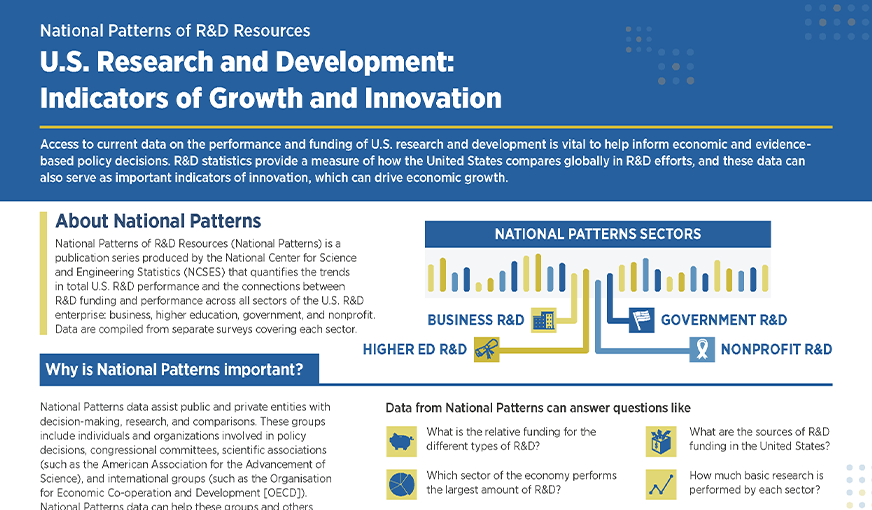For 2019–21, annual data on the R&D performed in the domestic United States by the business sector come from the NCSES Business Enterprise Research and Development (BERD) Survey, covering companies with 10 or more employees, and the Annual Business Survey (ABS), covering companies with 9 or fewer employees. BERD and ABS are conducted for NCSES by the Census Bureau in accordance with an agreement between the two agencies. BERD is a sample survey representing for-profit, publicly or privately held companies with 10 or more employees in the United States that performed or funded R&D either domestically or abroad in the manufacturing, mining, utilities, wholesale trade, transportation, information, or services industries. ABS is a sample survey of for-profit employer companies with a U.S. presence engaged in the mining, utilities, construction, manufacturing, wholesale trade, retail trade, or services industries. For the R&D statistics presented in this report, the ABS covers only businesses in the manufacturing, wholesale, and information sectors and the scientific R&D services industries with 1–9 employees.
For 2017 and 2018, the source of the data for companies with 10 or more employees was the Business R&D Survey (BRDS), a predecessor to the BERD Survey, with similar survey characteristics and coverage. ABS was again the source of data on companies with 9 or fewer employees in both of these years.
From 2008 to 2016, the primary source data on business R&D was the NCSES Business R&D and Innovation Survey (BRDIS), a predecessor of both BERD and BRDS. In a salient difference, BRDIS was designed to be nationally representative of all for-profit companies with 5 or more employees. In 2016, a companion survey, the Business R&D and Innovation Survey–Microbusiness (BRDI-M), provided statistics on the R&D activities that year of businesses with 1–4 employees. Prior to the 2016 data year, statistics on the R&D of these “micro” businesses ($4 billion–$5 billion annually) were neither available nor reported in the business R&D totals in National Patterns.
As noted, BERD, BRDS, and BRDIS are related surveys. With regard to R&D, the topical coverage has been similar: R&D performance (in the United States and worldwide); total and R&D employment (in the United States and worldwide); sources of R&D funding; type of R&D activities (basic research, applied research, development); type of R&D costs; R&D capital expenditures; R&D application and technology focus areas; geographic location (within the United States and in foreign countries); sales (in the United States and worldwide); and patenting, licensing, other technology transfer activities. The ABS and BRDI-M surveys provided R&D performance and funding data compatible with those for the larger companies.
For 2007 and earlier years, the data come from the NCSES Survey of Industrial Research and Development (SIRD), the predecessor to BRDIS. SIRD was also a sample survey, conducted annually (1953–2007), that provided national estimates of the R&D performed within the United States by industrial firms, whether U.S. or foreign owned. The SIRD target population consisted (same as BRDIS) of all for-profit companies with 5 or more employees, manufacturing and nonmanufacturing, that performed R&D in the United States. Data on the R&D of companies with fewer than 5 employees were not available throughout this period.
(Note: Data on business intramural R&D capital, as reported by BRDIS and its follow-on surveys, are not included as a component in the National Patterns total of business intramural R&D.)
 An official website of the United States government
An official website of the United States government


